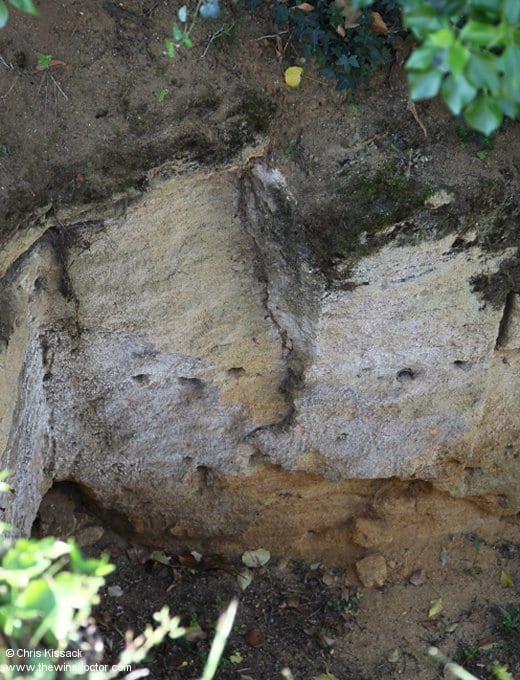Loire Valley Wine Guide: Limestone and Flint
Many of the Loire Valley’s most famous vineyards are located on limestone, with varying contributions from this sedimentary rock’s eternal partner-in-crime, flint. Indeed, if we list the region’s most famous half-dozen appellations, which I would suggest are Sancerre, Pouilly-Fumé, Vouvray, Chinon, Saumur and Muscadet, all but the latter are based on limestone. Although more ancient rocks rule in the Massif Armoricain (Muscadet and the western half of Anjou including Savennières and the Coteaux du Layon) and the Massif Central (Côte Roannaise, Côtes du Forez and the like) everything else the Loire Valley has to offer comes from the limestones of the Bassin Parisien. There are of course appellations which we might think of as being largely alluvial, on sandy and gravelly soils, such as Bourgueil and St Nicolas de Bourgueil on the banks of the Loire, or the Touraine vineyards alongside the Cher, but even in these appellations the best wines come from small areas of limestone. It only requires one taste of the wine from Les Malgagnes from the likes of Yannick Amirault in St Nicolas de Bourgueil, or perhaps one of the top limestone cuvées from Jean-Marc Biet, to realise this much.
Indeed, while the geology and the terroir of the Loire Valley is undoubtedly complex, much of this complexity in fact involves limestone, a rather more multifaceted rock than it at first appears. There are different types of limestone, different seams and layers, some deemed by the Ligérian vignerons to be more desirable than others. Then there is marl, limestone-like rock. There is also clay, which when in combination with limestone is also, confusingly, referred to as marl. And then there is the flint that the limestone inevitably carries. In order to fully understand the Loire Valley and its wines, therefore, I have decided it is worthwhile exploring the story of limestone, marl and flint in more detail.
The Origins of Limestone
There are several different manners in which limestone can form. The most common is the biochemical route, where limestone is formed by the sedimentation of lacunar or marine organisms on the floor of a lake or sea, and this is the type of limestone I will be discussing here (as it is relevant to the Loire Valley). It is also possible for limestone to form by the direct precipitation of previously dissolved calcium carbonate, but this mechanism only really relates to geothermal waters; it is how stalactites and stalagmites form, and it is also responsible for the creation of limestone terraces around hot springs like those found in the Yellowstone Park in the USA, or Whakarewarewa in New Zealand. It is not really relevant to the slopes of Sancerre or Vouvray though, and so I will restrict this section of my guide purely to the biochemical method.
Some marine organisms have evolved the ability to absorb calcium carbonate from seawater and to then incorporate it into a shell as crystals of either calcite or aragonite. Many different life forms have this ability, ranging from microscopic creatures such as the coccolithophore (unicellular phytoplankton which protect themselves with a multitude of calcium carbonate plates which are of huge significance in the creation of limestone), to coral, clams, scallops and oysters, to larger nautilidae and ancient ammonites. When these organisms die they sink to the sea floor, where the soft organic parts decay, creating an ooze of biochemical materiel incorporating shells, organic matter and seawater. With time the organic parts are dissolved or eaten, leaving a sediment of biochemical structures formed predominantly from calcium carbonate and water. Some of the material may dissolve, so this water is often saturated with calcium carbonate.

